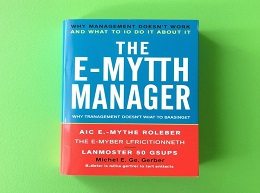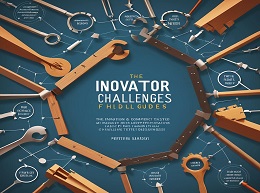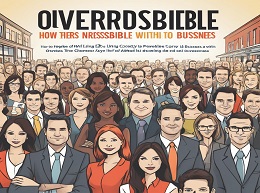The Startup Checklist: 25 Steps to a Scalable, High-Growth Business

From Idea to IPO: An In-Depth Review of "The Startup Checklist: 25 Steps to a Scalable, High-Growth Business"
David S. Rose’s "The Startup Checklist: 25 Steps to a Scalable, High-Growth Business" is a masterclass in entrepreneurship. Drawing from his vast experience as a successful entrepreneur and angel investor, Rose provides a step-by-step guide to building a startup that can thrive in today's competitive market. This review delves into the key aspects of the book, offering insights and examples that highlight its practicality and relevance for aspiring entrepreneurs.
The Structure of Success
"The Startup Checklist" is meticulously structured to guide readers through the complex journey of building a startup. Each of the 25 steps is a critical component of the process, designed to ensure that nothing essential is overlooked.
Step 1: Are You Ready to Be an Entrepreneur?
Before diving into the logistics of building a startup, Rose prompts readers to evaluate their readiness for the entrepreneurial lifestyle. This involves a deep introspection into personal motivations, strengths, and potential challenges.
Example: Rose shares anecdotes from entrepreneurs who realized the demanding nature of startups only after they had committed, emphasizing the importance of this self-assessment.
Step 2: Developing Your Idea
A successful startup begins with a strong, viable idea. Rose guides readers through the process of ideation, encouraging them to identify and validate a market need.
Example: The inception of Uber, where Travis Kalanick and Garrett Camp recognized the inconvenience of traditional taxi services and developed a disruptive solution, underscores the importance of addressing a real-world problem.
Step 3: Crafting a Business Plan
Rose advocates for a well-thought-out business plan, despite the current trend of minimal planning. He argues that a solid plan can serve as a roadmap and a tool to attract investors.
Example: Airbnb’s early business plan, which clearly outlined their unique value proposition and market potential, was crucial in securing initial funding and support.
Step 4: Choosing the Right Legal Structure
Selecting the appropriate legal structure is critical for tax and liability purposes. Rose compares various structures such as sole proprietorships, partnerships, LLCs, and corporations, providing guidance on making the best choice.
Example: Google’s transition from an LLC to a corporation facilitated their ability to attract venture capital and scale effectively.
Step 5: Protecting Intellectual Property
Rose emphasizes the importance of protecting your intellectual property (IP). He explains the different types of IP and how to secure them, ensuring your ideas and products remain safe from competitors.
Example: Tesla’s strategy of securing numerous patents for their electric vehicle technology helped establish their dominance and protect their innovations.
Step 6: Assembling a Winning Team
A startup’s success hinges on its team. Rose outlines strategies for recruiting co-founders and early employees who complement your skills and share your vision.
Example: The complementary skills of Steve Jobs and Steve Wozniak were instrumental in Apple’s early success, demonstrating the importance of a well-balanced team.
Step 7: Understanding Your Financials
Financial literacy is crucial for startup founders. Rose explains key financial concepts and how to manage cash flow, budgeting, and financial projections.
Example: Buffer’s transparent financial reports, which openly share revenue, expenses, and growth metrics, exemplify effective financial management and transparency.
Step 8: Raising Capital
Rose provides an in-depth look at various fundraising options, from bootstrapping and angel investors to venture capital. He offers practical advice on how to pitch to investors and secure funding.
Example: Slack’s successful fundraising rounds, backed by a clear vision and robust growth metrics, highlight the importance of strategic pitching and investor relations.
Step 9: Creating an MVP
A Minimum Viable Product (MVP) allows startups to test their ideas with minimal resources. Rose stresses the importance of launching quickly and iterating based on user feedback.
Example: Dropbox’s early MVP, which consisted of a simple video demonstration of their concept, validated the market demand and guided their development process.
Step 10: Marketing and Brand Building
Effective marketing is essential for attracting and retaining customers. Rose covers various strategies, including digital marketing, content marketing, and public relations.
Example: Dollar Shave Club’s viral marketing video, which creatively communicated their value proposition, significantly boosted their brand awareness and customer acquisition.
Step 11: Scaling Operations
Scaling requires robust operational systems. Rose provides insights into optimizing production, distribution, and customer support to handle increased demand.
Example: Amazon’s investment in a sophisticated logistics network has enabled it to scale operations globally while maintaining efficient delivery and customer satisfaction.
Step 12: Measuring Key Metrics
Tracking key performance indicators (KPIs) is essential for assessing progress and making data-driven decisions. Rose highlights important metrics such as customer acquisition cost (CAC) and lifetime value (LTV).
Example: HubSpot’s detailed KPI tracking has allowed them to optimize their marketing and sales strategies, contributing to their growth as a leading inbound marketing platform.
Step 13: Adapting and Pivoting
Flexibility and the ability to pivot when necessary can save a startup. Rose discusses how to recognize the need for a pivot and execute it effectively.
Example: Twitter’s pivot from a podcast platform (Odeo) to a microblogging service is a classic example of how adapting to market feedback can lead to success.
Step 14: Legal and Compliance
Navigating legal and regulatory requirements is crucial for avoiding pitfalls. Rose advises on compliance with laws and regulations, including intellectual property, employment, and industry-specific regulations.
Example: Uber’s proactive approach to navigating regulatory challenges in various markets underscores the importance of compliance and adaptability in scaling operations.
Step 15: Fostering Company Culture
A strong company culture attracts talent and drives performance. Rose emphasizes the importance of defining and nurturing a positive culture from the start.
Example: Google’s emphasis on creating an innovative and inclusive culture has been instrumental in attracting top talent and fostering an environment of creativity and collaboration.
Step 16: Planning for the Future
Long-term planning is crucial for sustainable growth. Rose advises on setting strategic goals, preparing for future challenges, and continuously innovating to stay ahead of competitors.
Example: Amazon’s long-term vision of becoming the “everything store” has driven its strategic investments in diverse areas like cloud computing, artificial intelligence, and logistics.
"The Startup Checklist: 25 Steps to a Scalable, High-Growth Business" by David S. Rose is a comprehensive and practical guide for aspiring entrepreneurs. Rose’s step-by-step approach, enriched with real-world examples, provides a clear roadmap from the inception of a business idea to its transformation into a scalable enterprise.
By following the 25 steps outlined in the book, entrepreneurs can navigate the complexities of the startup world with confidence, equipped with the knowledge and strategies needed to build a high-growth business. Whether you are just starting out or looking to scale your existing venture, "The Startup Checklist" offers invaluable insights and actionable advice, making it an essential read for anyone serious about entrepreneurship. This book is not just a guide but a blueprint for building a successful, scalable, and high-growth business.













